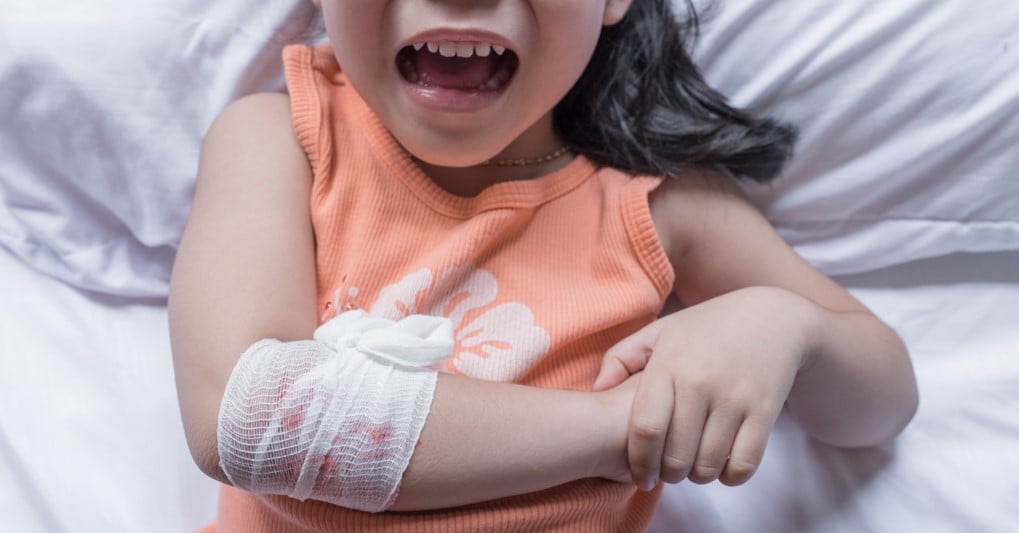Paediatrics is a term used to describe medical care of infants, children and teenagers. In the case of an injury, children under the age of 18 require medical attention from a doctor who specializes in paediatrics in order to ensure that they are property treated. It is also important to understand how to prevent injuries in children and teens. Here are a few tips that can help you keep your child safe this summer.
1. Motor Vehicle Accidents
For children between the ages of 1 to 19, motor vehicle accidents are the leading cause of unintentional injury and death. They are the second leading cause for children under the age of 1. For children between ages 5 – 14, it is the third leading cause of unintentional injury hospitalizations, and the second leading cause for children between the ages of 15 – 19 (Canadian Paediatric Association). Needless to say, practicing and teaching your child about car safety is absolutely imperative. Here are some things that every parent should know:
- Infants should be kept in rear-facing car seats for as long as possible, and they should never be put in a front facing car seat before they turn 1 year old and are at least 20 pounds.
- Even once a child outgrows a rear-facing seat, their car seat must remain in the backseat until they are at least 4-years-old and at least 40 pounds.
- Booster seats are only to be used once your child outgrows a front-facing seat, and until a seatbelt fits them properly.
- Seat belts must be placed across the upper thighs, across the chest and over the shoulder. This generally occurs when a child reaches approximately 4’9”.
- Seat belts should always be worn, and the importance of them should be taught to your child.
2. Suffocation
Choking and suffocation is one of the top paediatric injuries seen. It’s the leading cause of unintentionally injury death in infants, and the third leading cause in children between the ages of 1- 9 (Canadian Paediatric Association). A lot of times, suffocation and choking can be prevented with simple precautionary measures. This includes:
- Taking a CPR course.
- Removing all items from your child’s crib and/or sleeping quarters.
- Never leaving a child unattended when they’re eating.
- Teaching your child to eat slowly and chew thoroughly.
- Doing frequent checks around the home, especially within the play areas to ensure no small objects can get into the hands and mouths of little ones.
3. Drowning
Drowning is the second leading cause of unintentional injury death for children between the ages of 1 and 14. It is the third leading cause of death for infants. Also, it is important to know that infants can drown in as little as one inch of water (Canadian Paediatric Association). Fortunately, drowning is very preventable. These tips will certainly help keep your child safe when near water:
- Never leave a child unsupervised around water.
- Teach your child to always ask before entering water.
- Enrol your child in age-appropriate swimming lessons.
- Always wear a life jacket when around large bodies of water.
4. Poisoning
It only takes a few seconds for a child to unintentionally digest a poisonous substance, and it happens more often than you may think. In fact, it is the third leading cause of hospitalizations for children under the age of 1, and the second leading cause for children between the ages of 1 and 4 (Canadian Paediatric Association). It is imperative to ensure that all harmful substances are kept in a safe place.
- Keep all toxic products and medicines out of reach, whether in a locked cabinet or on high shelves.
- Always read and follow medicine directions carefully when administering them to children.
5. Burns
Little ones have a tendency to touch everything. This may be the reason why burns are the second leading cause of unintentional injury hospitalizations in children, and the third leading cause for children between the ages of 1 and 4 (Canadian Paediatric Association). Teach your child about the dangers of stovetops and other hot items to prevent this common paediatric injury from occurring.
- Teach your child about hot liquids and steams.
- Teach your child about the hot items in the home that should not be touched, such as the stove.
- Teach your child about fire safety.
Although these are the top five-paediatric injuries, they are easily preventable. With knowledge and precautionary measures, you can ensure your child’s safety from the time they’re born and well into their adult life.






